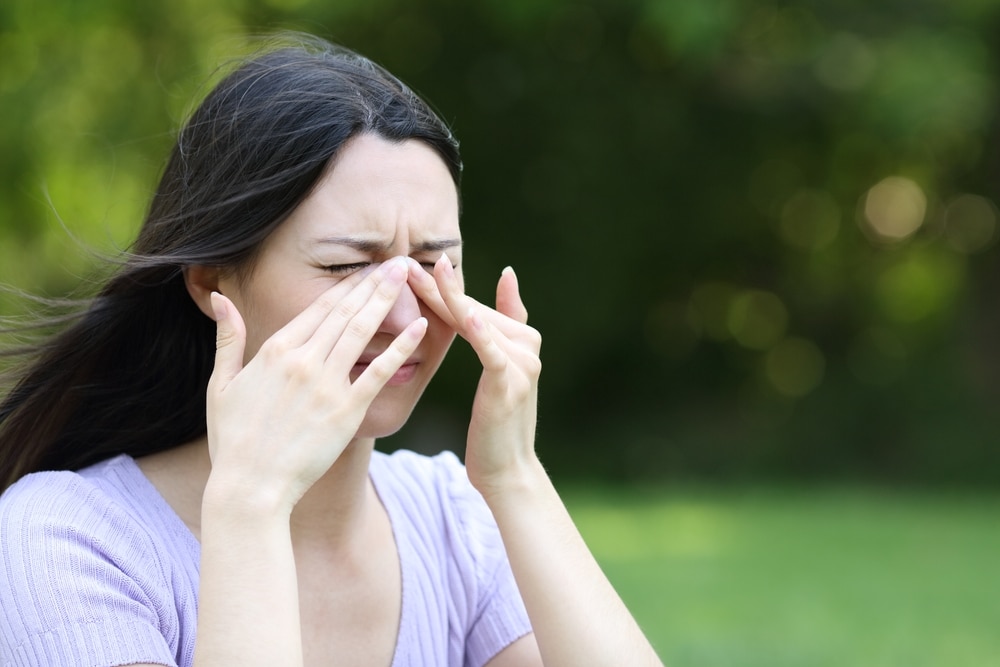
Do you have dry eyes and irritation that won’t go away? Are you experiencing more sensitivity to light and blurry vision?
You may have dry eye syndrome, a common eye condition that can be frustrating and has uncomfortable symptoms. If you think you may have dry eye, your eye doctor can help properly diagnose your condition and recommend treatment options to help you find relief.
Keep reading to learn more about 6 of the most common dry eye symptoms you can experience.
What is Dry Eye?
Dry eye is a condition that occurs when your eyes are not producing enough tears or when the tears produced are low in quality and can’t provide enough moisture. This often results from a lack of one of the three main components of a healthy tear film: oil, water, and mucus.
Without all three components, your tear film can become unstable, leading to dry eye. While many people occasionally experience dryness in their eyes, dry eye is a chronic condition that requires further treatment.
What are the Symptoms of Dry Eye?
Dry eye has many symptoms, some of which may be quite persistent and some that can be brought on by certain environmental triggers. Six of the most common symptoms of dry eye include:
1. Dry Eyes
The most common symptom of dry eye is dry eyes that won’t go away. This can be especially frustrating if you use contacts, as it can make wearing them uncomfortable or difficult.
2. Blurred Vision
Having a healthy tear film is crucial for maintaining good vision. If you have dry eye, the tear film cannot properly lubricate or cover the surface of your eyes, causing blurry vision.
3. Stinging, Burning, and Irritation
Dry eye can cause mild eye pain and irritation that feels like stinging or burning. Environmental factors like smoke or wind can enhance these symptoms and make them worse.
4. Light Sensitivity
A common sign of dry eye is a heightened sensitivity to light. If your eyes hurt when you go outside or look at a bright screen, you may have dry eye.
5. Excessive Tearing
When you have dry eye, your eyes often try to compensate for the lack of moisture by making excessive tears. However, these tears are usually poor in quality and ineffective at restoring the tear film.
6. Mucus Around the Eyes
You may notice strings of mucus in or around your eyes with dry eye syndrome. This is because your tear film is improperly balanced and contains too much mucus, which deposits around the eyes.
Although these symptoms can often be common signs of dry eye, they could be signs of other eye conditions. To get an accurate diagnosis and effective treatment, you should schedule an appointment with your eye doctor at Rosenthal Eye Surgery.
How is Dry Eye Diagnosed?
Your ophthalmologist will ask questions about your symptoms, medical history, and lifestyle habits at your appointment. They will also conduct a thorough eye exam for signs of dry eye or other eye conditions.
Some of the tests they may use to determine your diagnosis include:
The Schirmer Test
The Schirmer test involves placing a small piece of paper on the edge of your eyelid. It takes about 5 minutes to complete, and the amount of tears your eyes can produce is measured.
Tear Breakup Time Test
Your eye doctor can use the tear breakup time (TBUT) test to check how quickly your tears evaporate. They will use a special dye in your eye and examine it with a microscope to measure the length of time your tear film can remain stable.
Slit Lamp Exam
Conducting a slit lamp exam is another way your eye doctor can determine the amount of tears your eye is producing. They will shine a slit lamp into your eyes and look at them through a microscope.
Do you think you may have dry eye? Schedule an appointment at Rosenthal Eye Surgery in Long Island, NY, today for a comprehensive eye exam!
